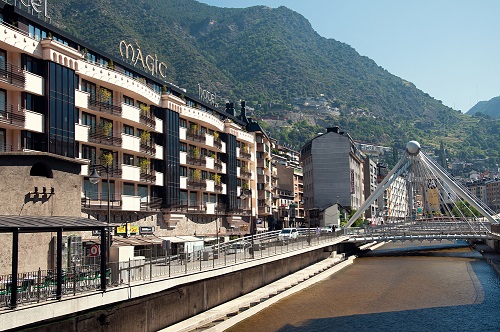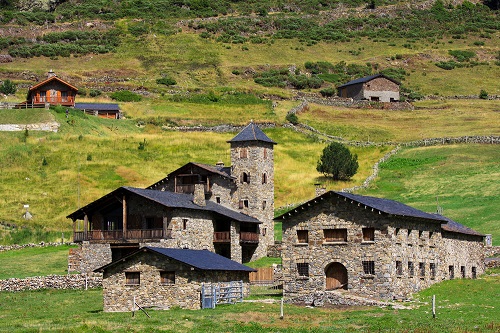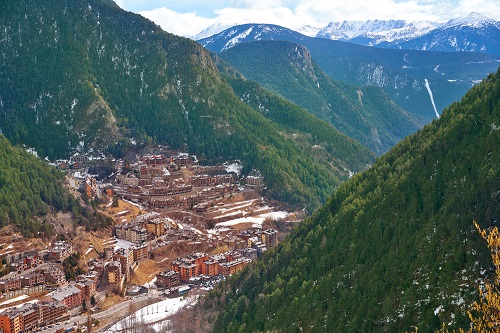Andorra is widely regarded as having one of the best healthcare systems in the world, despite its small size. The microstate, which comprises a population of just 76,965 people and one hospital, certainly packs a punch when it comes to healthcare. Not only is the quality of the Andorran healthcare system considered excellent by global standards, but the social security system (regulated by CASS) means that a large proportion of the medical costs are subsidised as well.According to the last study that the World Health Organisation (WHO) conducted on the Andorran healthcare system, Andorra’s total expenditure on health per capita (in international dollars) is around $4,273 in a year, equating to 8.1% of GDP. It is estimated that Andorra has around 3.7 physicians per 1,000 people, 4.01 midwives per 1,000 people, and approximately 2.5 hospital beds available per 1,000 people. These hospital beds include inpatient beds available in the public sector and the private sector, as the hospital houses both public and private practitioners.

Obtaining medical and health procedure costs can be difficult. The public sector does not always make estimated costs easily accessible online, particularly to those who do not actually require treatment. The private sector can essentially charge whatever they like, meaning that prices vary astronomically between different regions and even between facilities in the same city.
Other things that can affect costs include your risk factors as a patient (such as your age, any underlying health conditions, your weight, whether you’re a smoker, etc.) and the nature of the medical treatment or procedure you require. Naturally, the costs will be higher if the procedure or treatment you need requires a specialist doctor or specialist equipment.
In order to obtain a more precise idea of how much your treatment will cost, you will most likely need to contact your potential provider directly for a quote or rough estimation.
Health procedure costs in Andorra
The WHO collected data on the cost of healthcare visits in Andorra. The data was based specifically on public healthcare, with an occupancy rate of 80%, and represented the core hospital costs, i.e. it excluded drugs and diagnostic tests, but included other costs, such as those for personnel, capital and food. The results are presented below, in international dollars.
Cost of hospital bed per day
The average cost of a hospital bed per day (primary care) was $194.41. For secondary care, the average cost per day was approximately $253.63. In terms of tertiary care, the cost of a hospital bed per day was around $346.42.
Cost of outpatient visits
For primary healthcare, the average cost of an outpatient visit was $81.35. This cost rose to $115.39 for secondary care, and to $170.69 for tertiary care.
Unfortunately, medical procedure costs and treatment costs are notoriously difficult to get hold of, and we were unable to find any data pertaining to these aspects of healthcare costs.
Typical subsidy coverage
The healthcare system in Andorra is provided through the government-run social security system – Caixa Andorrana de Seguretat Social, aka CASS. The CASS system is funded by taxpayers by way of social security payments. These payments are typically taken directly out of employees’ paychecks. Employers are also expected to contribute a certain amount, usually around 13%, per person in their employment.
The amount of government subsidised cover is usually around 75%, with the patient paying for the treatment out of pocket, and then seeking reimbursement from CASS, which is deposited by BACS into their bank account. The 75% cover typically applies to outpatient care and medical costs incurred. In the case of hospitalisation, 90% of the costs will usually be covered by the state. Work related accidents and giving birth are covered 100% by the state social security.

Tariffs and Caps
The Government of Andorra has adopted a few amendments to the law on healthcare in recent years. These amendments primarily concern the relationship between two key services, Caixa Andorrana de la Seguretat Social (CASS) and Servei Andorrà d’Atenció Sanitària (SAAS). These organisations are responsible for the running and regulation of social security and for the provision of medical services respectively.
The new tariffs introduced within the last few years implemented a cap on monthly hospitalisation costs, which is now set at a maximum monthly payment of €1,455. This includes the cost of reanimation and/or medical intervention of a high complexity, when necessitated in severe cases.
The tariffs also state that hospitalisation that requires surgical intervention and/or a series of medical procedures/treatments will cost €150 for the first day. The initial period is when most of the costs are spent, in the form of intensive care or surgery. Following this initial period and payment, the cost will be decreased to €45 per day for the remaining days (for a maximum period of 30 consecutive days). From their 31st day in hospital, the patient will only be required to pay €16 per day.
It is worth noting that the outlined tariffs do not include the costs of operations/procedures themselves.
The finance minister of Andorra, Jordi Cinka, said that “the new funding system contributes to a more efficient use of hospital resources and will promote the use of other resources, such as first aid or home care.” The new system was also designed to simplify the billing process and communicative relationship between CASS and SASS.

